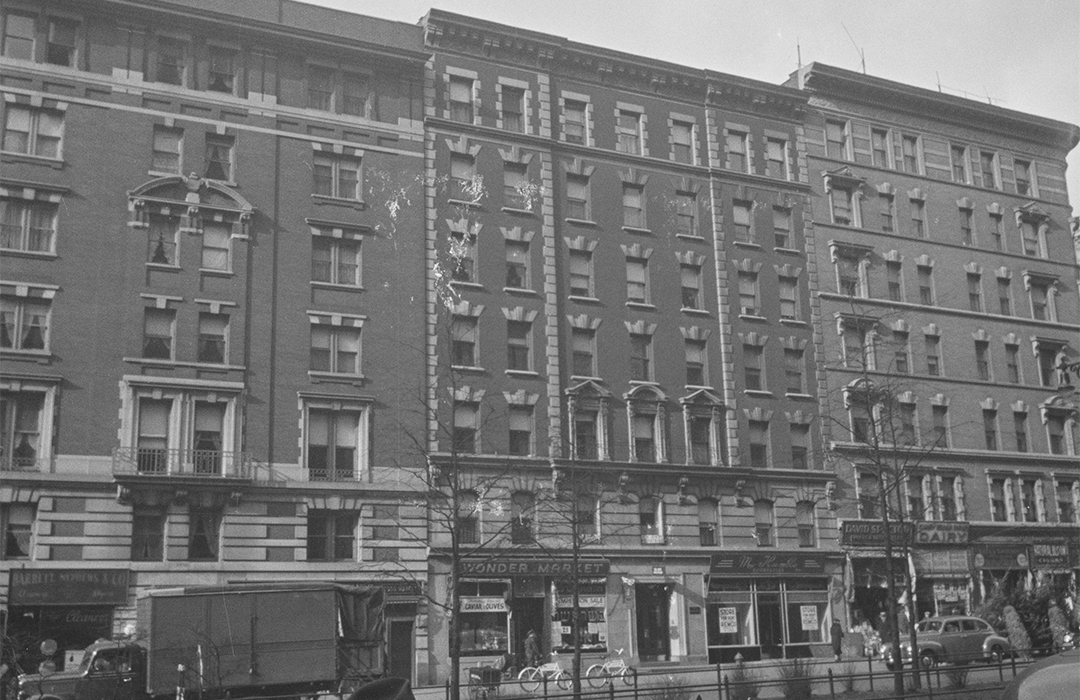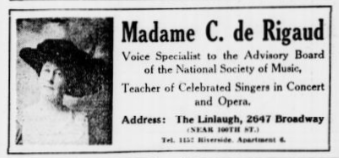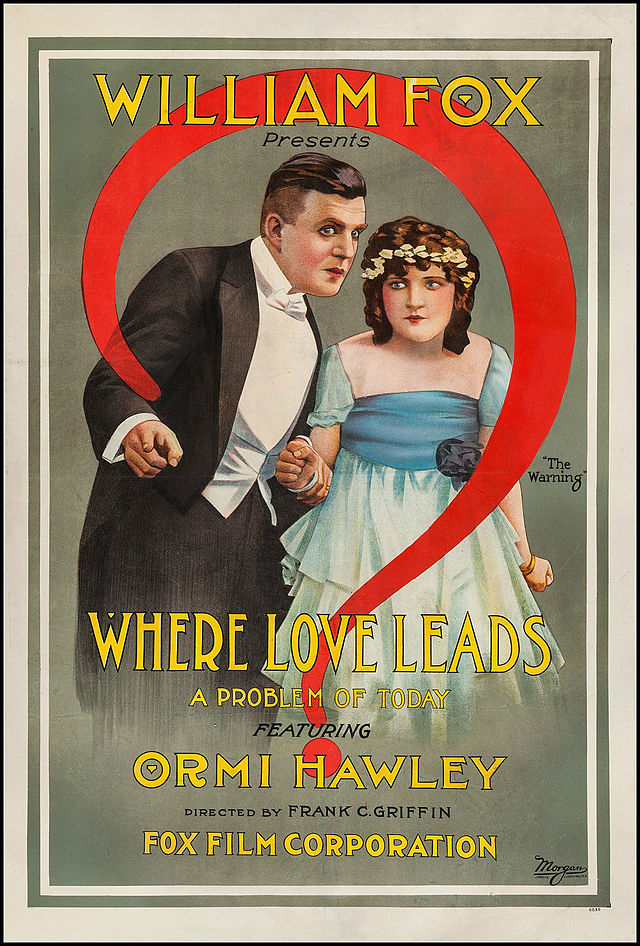
The Linlaugh
by Tom Miller
Among his many building projects in the last decades of the 19th century, Thomas J. McLaughlin erected a flat-and-store building named the Linlaugh on the east side of Broadway, mid-block between 100th and 101st Streets. Designed by the architectural firm of Neville & Bagge, the seven-story structure was completed in 1900. The architects’ neo-Georgian design included splayed stone lintels within the four-story midsection, pedimented windows at the third floor, and stone quoins that divided the top five floors into three vertical sections. Two stores, one on either side of the residential entrance, provided extra income. An advertisement in December 1900 called the Linlaugh “A modern apartment house, with every convenience.” It boasted:
Apartments are delightfully arranged in suites of 6 and 7 rooms, and are especially adapted to the comforts and convenience of families desiring first-class accommodations at much lower rents than usually prevail in similar houses.
Up-to-the-minute amenities included were electric lights, an elevator, and, perhaps most shocking, a “telephone in each apartment.”
Among the initial residents were Lt. Christopher L. Bruns and his wife, the former Carmelite C. Bowling. Born in July 1852, Bruns entered the Naval Academy in 1867, two years after the end of the Civil War. He married Carmelite in New Orleans in 1883. The following year he was injured in an accident aboard ship, which eventually forced his retirement that year. But when the Spanish-American War broke out in 1898, the 46-year-old applied for active service. Throughout the war, he served in administrative positions for several naval departments. He was discharged on October 6, 1898, just two years before he and Carmelite moved into the Linlaugh.
“Mr. and Mrs. William G. Beecroft, who were married yesterday, climbed down the fire escape from the fourth floor of the Bingham, Broadway and Ninety-fourth street, yesterday to escape their friends.”
Living here in 1903 was the wealthy widow of importer Diedrich Schmidt, and her daughter Frederica Beta Schmidt. The apartment was the scene of Frederica’s marriage to William George Landsman Beecroft, the dramatic editor of the New York Press, on the afternoon of June 23. The New York Morning Telegraph noted, “The wedding was a private affair.”
The newlyweds’ hopes of privacy were dashed when they later retreated to Beecroft’s apartment in the Bingham Hotel six blocks away. They were trailed by a mob of friends who demanded a celebration. The Daily Standard Union reported, “Mr. and Mrs. William G. Beecroft, who were married yesterday, climbed down the fire escape from the fourth floor of the Bingham, Broadway and Ninety-fourth street, yesterday to escape their friends.”
Fredericka’s critic husband was no doubt familiar with several of the artistic tenants of the Linlaugh. Living here by 1906 was Madame C. de Rigaud, who trained concert and operatic singers. On March 3, 1906, the New-York Tribune mentioned that she “numbers among her pupils Miss Elisabeth Anglin, who sang at the memorial service of the Knights of Columbus, and Miss Minerva Telsey, who sang at the festival of the Brooklyn Educational Society.”
Madame de Rigaud was still in the building in 1916, along with another voice coach, Madame Haggerty-Snell who had arrived in 1913. Her tag line in advertisements was “Not all may become Artists, but everyone can be taught to sing artistically.” Another operatic tenant at the time was tenor Paul Althouse of the Metropolitan Opera Company.
Many of the Linlaugh’s residents were well-to-do and socially prominent. The 1911 issue of Dau’s Blue Book of New York Society listed 10 residents. One resident whose name never appeared in the Blue Book but was certainly well recognized was Ormi Hawley, who lived here by 1917. The actress was born in Holyoke, Massachusetts, in 1890 and was classically trained at the New England Conservatory of Music. She turned, instead, to the stage and then to motion pictures. By the time she moved into the Linlaugh, she had appeared in more than 250 silent films.
In the meantime, the shop at 2649 Broadway had opened in 1901 as a real estate office and remained so, under different ownerships, until Belle’s Hat Shop signed a lease in 1920. The other store was initially B. Zipser’s ladies’ tailoring shop, followed by the dyeing and dry-cleaning establishment of Barrett, Nephews & Co. The firm had 26 branches in Manhattan and boasted, “We clean and dye everything for the wardrobe or home, from the Delicate Lace to the Heavy Wilton Carpet.”
The Linlaugh remained relatively scandal-free until the highly publicized divorce of J. Wilbur Chapman and his wife, Arline. Chapman was the son of the late J. Wilbur Chapman, an evangelist and the pastor of the Fourth Avenue Presbyterian Church. The couple had a son, J. Wilbur Chapman 3d. Strict religious demeanor was not necessarily an attribute among all the Chapman men.
In the spring of 1922, Arline took little J. Wilbur out of town. She left a key to the apartment with her mother, Nancy Bonay. In March, Nancy went to the apartment, but the elevator man cautioned her that “a blonde woman” was in the apartment. Nancy waited in the lobby until a woman, whom the elevator man identified as the blonde, left. She then went up to the apartment. The New-York Tribune reported, “Inside she found a gown and a pair of woman’s slippers, which…did not belong to her daughter. She also found some empty whisky and gin bottles and recently used glasses close by.”
He and a co-worker opened a bank account in a woman’s name, then “diverted to it various sums by means of fraudulent bookkeeping”
When Arline needed Easter clothes for her son, Percival Lent went on the mission. He was Arline’s cousin. In court on April 18, he testified that when he opened the door he found “a young woman, ‘light blonde,’ in the company of Chapman.”
William S. Frazier committed a transgression much worse than infidelity three years later. The 42-year-old was described by The Sun as a “long trusted and veteran employee of the New York Trust Company.” He and a co-worker opened a bank account in a woman’s name, then “diverted to it various sums by means of fraudulent bookkeeping,” explained The Sun on February 20, 1925. By the time they were caught, they had embezzled approximately $30,000, nearly $425,000 in 2023 money.
Several of the largest suites were divided during the Depression years. There were now three or four apartments per floor. An advertisement in 1933 offered apartments ranging from one to six rooms. Each had an Electrolux refrigerator in a “real kitchen” and “refined decorations. The rent for a six-room apartment was $100 monthly (equal to about $2,000 in 2023).
By the mid-1960’s H. Plofsky’s fish market occupied 2647. It was taken over by Harold & Morris Fish Co. in 1973. The store at 2649 was an Aerosoles shoe store throughout the 1990s and well into the early 2000s.
At some point in the 20th century, the building lost its unique name. Although the two storefronts have been modernized and the upper floors have replacement windows, 2647 Broadway is remarkably intact overall.
Tom Miller is a social historian and blogger at daytoninmanhattan.blogspot.com
BUILDING DATABASE
Keep Exploring
Be a part of history!
Think Local First to support the businesses at 2647-2649 Broadway:




